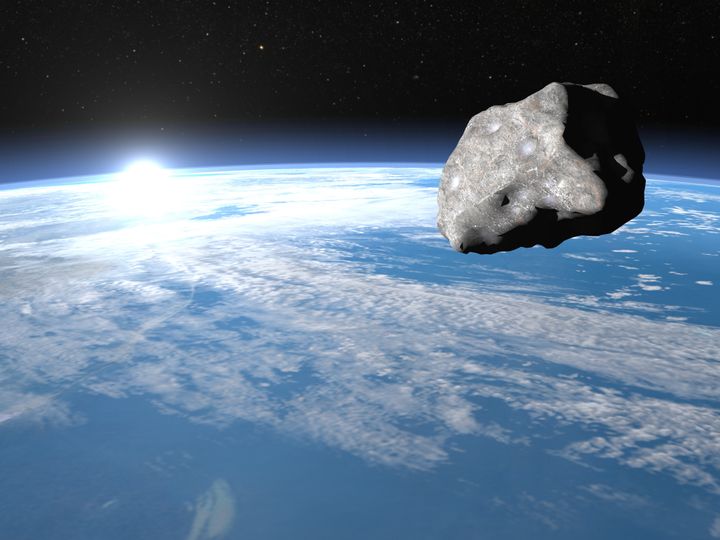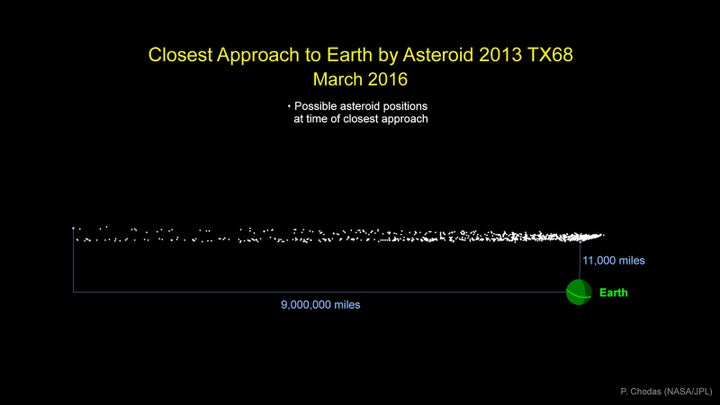Don't panic. Earth isn't going to be hit by a basketball court-sized asteroid early next month.
The 100-foot wide space rock named "2013 TX68" could soar just 11,000 miles away from us on March 5.
But NASA says there's absolutely no chance the "brush" or "buzz," as it's been described, will see it slam into our planet.
There's a tiny possibility (we're talking 1-in-250-million) it may happen on a future flyby in September 2017, says NASA's Center for NEO Studies.

It's also possible when it circles back again in 2046 and 2097. CNEOS manager Paul Chodas, however, says the chances are "far too small to be of any real concern."
But this 2016 flyby? It will most definitely not be happening, CNEOS says. In fact, scientists aren't really sure exactly how close it will come next month.
They've only been tracking the asteroid since its discovery by the NASA-funded Catalina Sky Survey in 2013. But as they only monitored it for three days before it passed from the Earth's nighttime to daytime sky and couldn't be seen anymore, its precise orbit couldn't be calculated.
Therefore, scientists say it could end up anywhere between 11,000 to 9 million miles away from Earth next month, as this graphic illustrates:

"2013 TX68" last flew past Earth in 2014 at some 1.3 million miles away.
Due to its uncertain trajectory, Chodas says it will be tough to predict exactly where to look for it in the sky. Whether stargazers will get a glimpse depends on its distance and position.
"There is a chance that the asteroid will be picked up by our asteroid search telescopes when it safely flies past us next month, providing us with data to more precisely define its orbit around the sun," he said.
Also on HuffPost:
